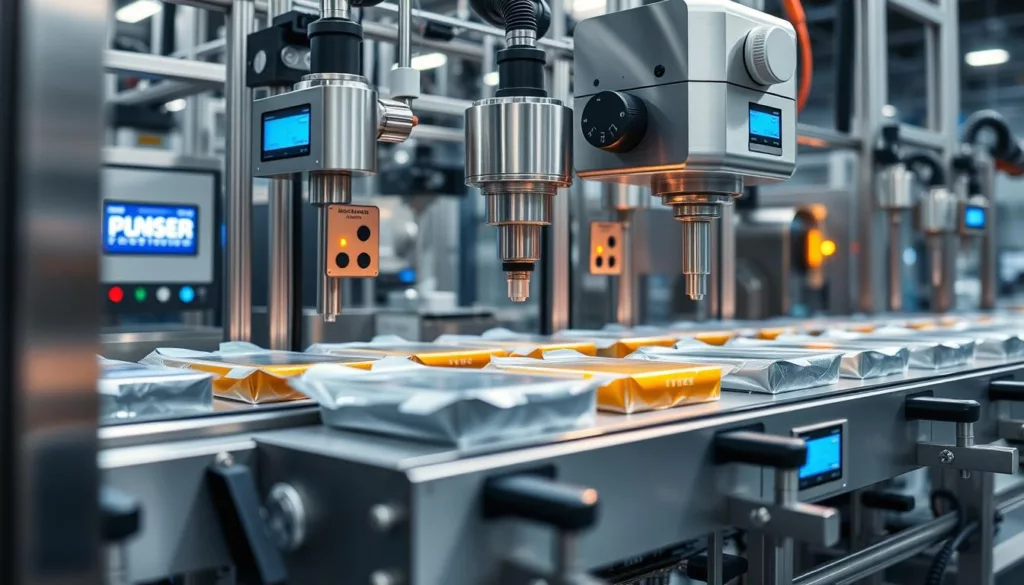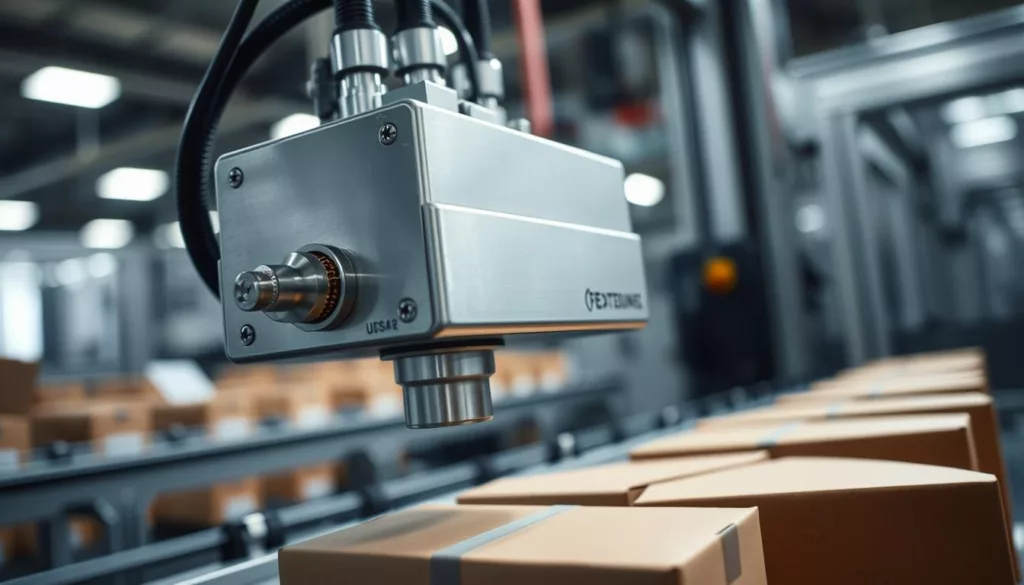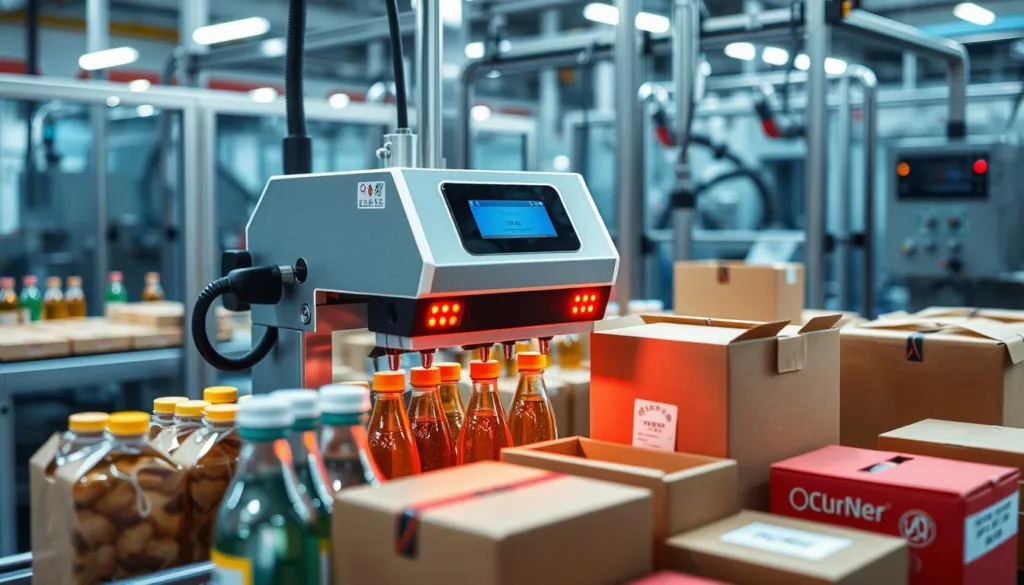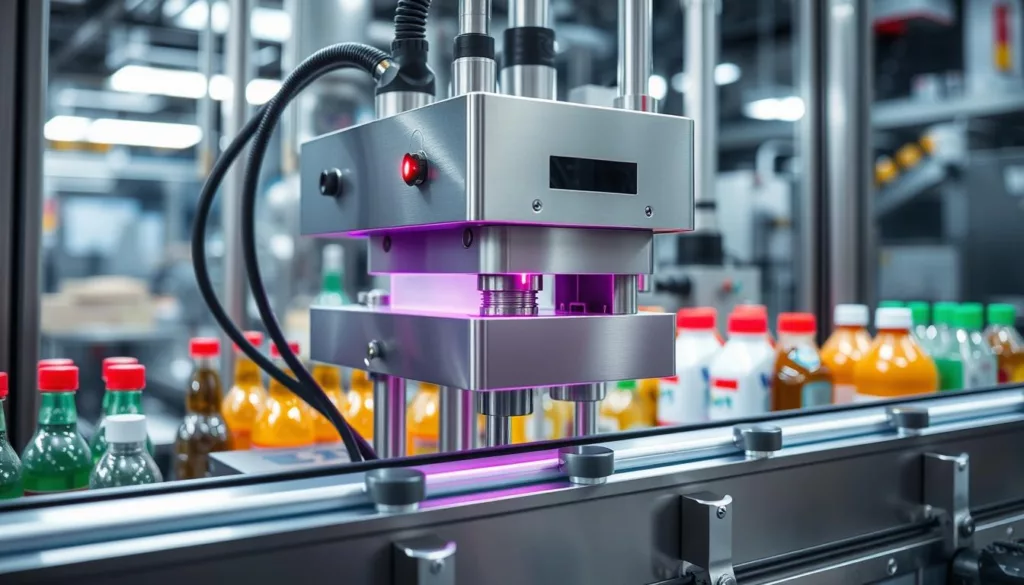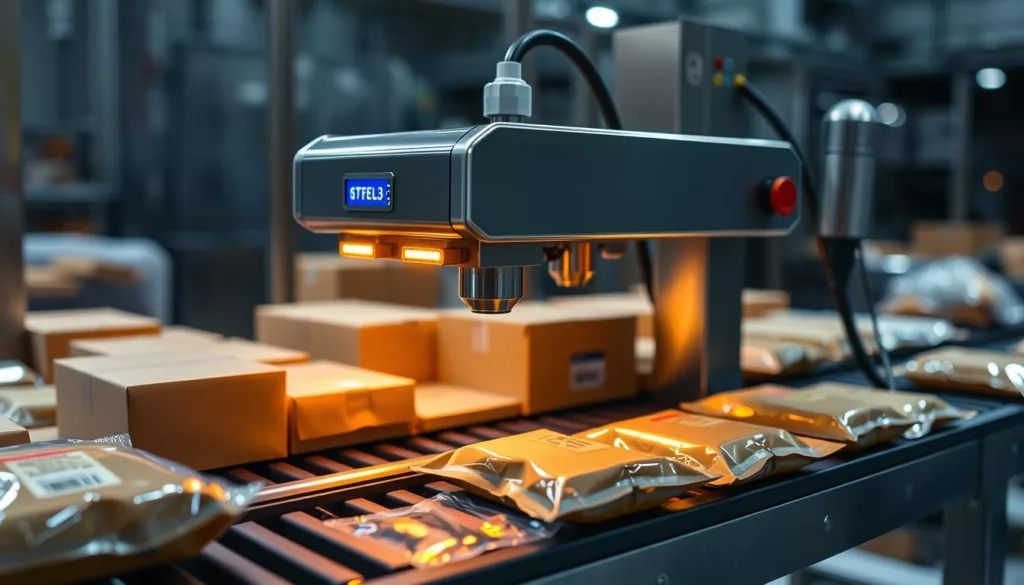In the world of manufacturing, keeping packaged products safe is a top priority. Packaging sealing sensors play a critical role in quality control. They help industries ensure their products meet the highest standards. By using advanced sensor technology, we can avoid defects and stop product leaks.
These sensors also make operations run smoother and protect the reputation of brands. At XJCSENSOR, we focus on creating custom sensor solutions. Our aim is to support the complex needs of automated packaging solutions.
Key Takeaways
- Packaging sealing sensors are essential for maintaining product integrity.
- Advanced sensor technology helps to prevent leaks and defects.
- Quality control sensors enhance overall efficiency in production processes.
- Reliable sealing equipment supports brand reputation.
- XJCSENSOR specializes in tailored solutions for automated packaging.
Introduction to Packaging Sealing Sensors
Packaging sealing sensors are key in quality control. They check the seal strength in packaging. This makes sure every package is safe and meets standards.
These sensors use advanced technology to give instant seal data. This info helps factories improve their checks. It lessens the chances of selling products with bad seals.
This technology also makes packaging faster and reduces waste. It ensures products are consistently safe. Thus, it’s crucial in keeping customers satisfied and ahead in the market.
Importance of Quality Control in Packaging
Quality control in packaging is crucial during the production process. It makes sure products are safe and meet what customers expect. Using quality control sensors in packaging lines is key for keeping products consistent and intact. These sensors spot any issues in sealing equipment. This ensures every package is sealed right, reducing contamination or spoilage risks.
Strong quality control steps protect consumers and boost the brand’s image. A good quality management plan with sensors keeps packaging up to standards, aiding market success. By using new technology, companies can prevent problems and show their dedication to excellence.
| Aspect | Importance |
|---|---|
| Product Safety | Ensures protection against contamination |
| Regulatory Compliance | Meets industry standards |
| Brand Reputation | Enhances consumer trust |
| Cost Efficiency | Reduces waste and product leakage |
Adding quality control sensors lets firms closely watch the packaging process. Modern sealing equipment does more than just seal correctly. It also keeps the quality high, meeting consumer expectations. This focus on quality control helps businesses thrive in a competitive landscape.
How Packaging Sealing Sensors Work
In today’s world, packaging sealing sensors are key for keeping products safe. They use high-tech methods to make sure seals are perfect. These methods help us ensure top performance and boost product safety.
The Role of Sensor Technology in Quality Assurance
Sensor technology is crucial for checking if seals are good. It looks at things like pressure, temperature, and sound waves. This way, it spots any issues early on. This helps keep the risk of packaging problems low and ups quality control.
Understanding Seal Inspection Systems
Seal inspection systems use visuals and advanced tech to check seals for flaws. They let makers find and fix problems fast. Using these high-tech systems helps improve quality checks and keep things running smoothly.
Benefits of Using Packaging Sealing Sensors
Using packaging sealing sensors brings lots of good things to manufacturing. They help operations run more smoothly and with less waste. This leads to saving money and making sure products are well-protected.
Enhancing Efficiency in Automated Packaging Solutions
Adding these sensors to automated packaging lines makes things work better and faster. They check seal quality in real time. This cuts down on manual checks and mistakes.
When every seal is just right, companies can produce more and keep things moving fast. This helps them stay productive without slowing down.
Reducing Waste and Preventing Product Leakage
Another big plus is less waste. The sensors catch any seal problems early. Then, things can be fixed before products go out to customers.
This approach stops leaks and avoids the need for returns. In the end, businesses save money by not wasting resources or losing sales.
Types of Packaging Sealing Sensors
It’s important to know about different packaging sealing sensors for better industrial process. Each kind has its own technology and fits different roles in sealing. Let’s look at the common types:
- Capacitive Sensors: Perfect for non-contact seal checks, they notice capacitance changes when a seal is there.
- Inductive Sensors: They use electromagnetic fields, great for finding metal objects during sealing.
- Photoelectric Sensors: These use light to tell if a package is sealed right, offering accuracy and reliability.
- Ultrasonic Sensors: Emitting sound waves, they’re good for non-invasive seal checks, very precise.
- Pressure Sensors: By measuring pressure inside sealed containers, they ensure the seal is good.
Different packaging sealing sensors are key for better quality control. Picking the right sensor can help cut down waste, avoid leaks, and meet high quality standards.
| Type of Sensor | Operation Principle | Best Use Case |
|---|---|---|
| Capacitive Sensor | Detects changes in capacitance | Non-contact seal verification |
| Inductive Sensor | Utilizes electromagnetic fields | Metal object detection |
| Photoelectric Sensor | Emits light beams | Package presence verification |
| Ultrasonic Sensor | Uses sound waves | Non-invasive seal detection |
| Pressure Sensor | Measures pressure changes | Seal integrity confirmation |
Integration of Sensors in Packaging Machinery
Adding sensors into packaging machines makes them work better and check quality closely. This step needs careful planning. It makes sure parts of the production line work well together. By doing this, machines pack better, keep products safe, and cut down on waste.
Best Practices for Sensor Integration
Adding sensors into machines requires following key steps:
- Analyze current systems: Look closely at your machines to find the best spots for sensors.
- Collaborate with suppliers: Work with sensor makers for the best fit and performance.
- Implement testing phases: Test sensors well before using them all the time to catch any issues early.
- Train staff: Teach your team how to use the new setup for the best results and to solve problems quickly.
Choosing the Right Sensors for Your Packaging Line
Picking the right sensors is key for good results. Keep these in mind when choosing:
- Sensor type: Pick from capacitive, inductive, or photoelectric sensors based on your needs.
- Environmental conditions: Ensure the sensors can handle your machine’s environment, like temperature and humidity.
- Compatibility: Make sure the sensors will work with your machines without problems.
Common Applications of Packaging Sealing Sensors
Packaging sealing sensors are key in many industries. They maintain product seal integrity. They prevent contamination and spoilage, emphasizing their importance.
Industries Utilizing Sealing Equipment
Several sectors gain from using packaging sealing sensors. They include:
- Food and Beverage: It’s critical to keep products fresh and avoid spoilage.
- Pharmaceuticals: Seal integrity is crucial for meeting safety regulations.
- Cosmetics: It’s important to keep formulas safe from external harm.
Real-world Examples of Successful Implementations
There are many success stories with packaging sealing sensors:
- Food Processing Plants: These facilities use sealing sensors to prevent leakage and preserve packaging quality.
- Pharmaceutical Companies: These organizations rely on sensors for blister packaging. This ensures medicine effectiveness and safety.
- Cosmetic Brands: Cosmetic companies use these sensors to prevent contamination. This keeps product quality high from start to finish.
For further details on advanced packaging methods, visit XJCSENSOR. We offer customized solutions that prioritize quality and innovation. Check out our sensor solutions to enhance productivity and meet quality standards.
Challenges in Packaging Line Monitoring
Packaging sealing sensors have many benefits, but challenges still exist. Problems like equipment malfunction greatly affect sensor effectiveness. This can lead to product flaws and inefficiencies. Also, due to the mechanical setup of packaging machines, sensors often get misaligned. This makes monitoring harder.
External factors are crucial in sensor performance. Variables such as temperature and humidity can change how well sensors work. Plus, dealing with different products and packaging materials complicates monitoring. This requires a detailed approach.
To overcome these issues, constant maintenance is critical. Businesses should also use advanced monitoring tactics. They need quality control sensors that can handle various conditions. This way, production lines stay efficient and output remains high-quality.

